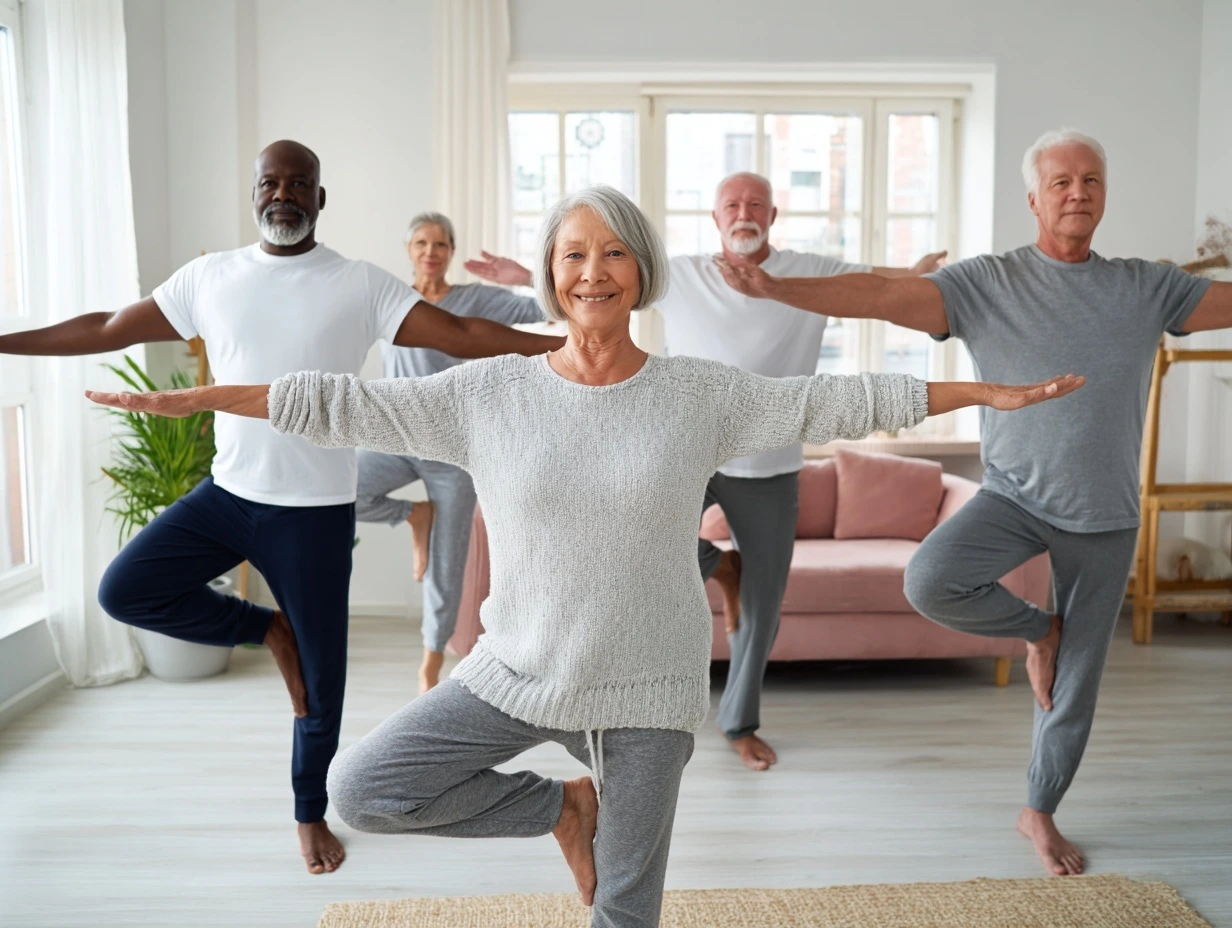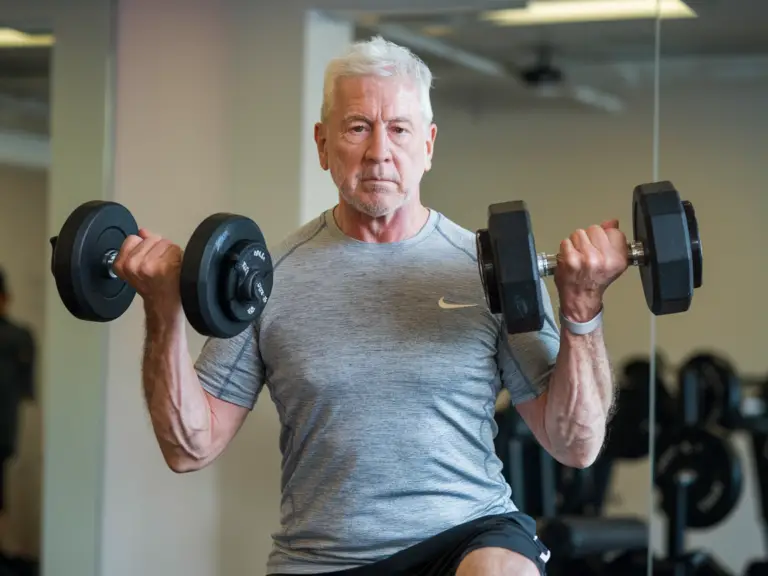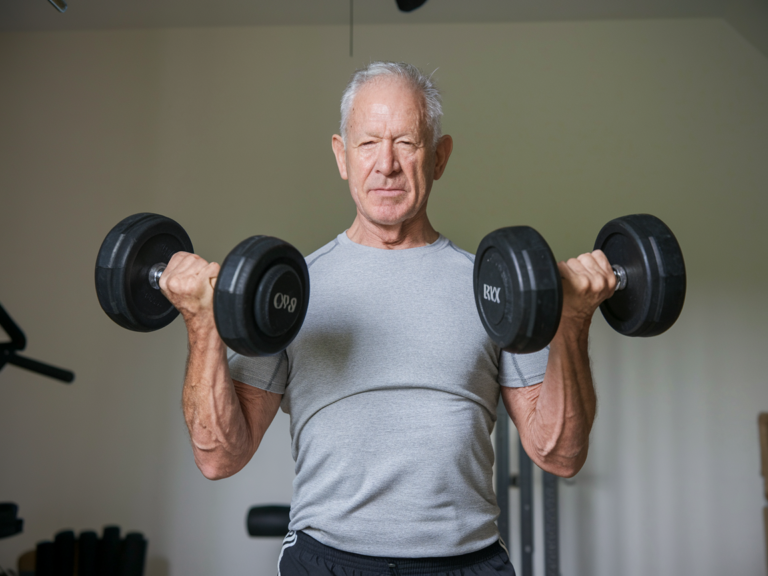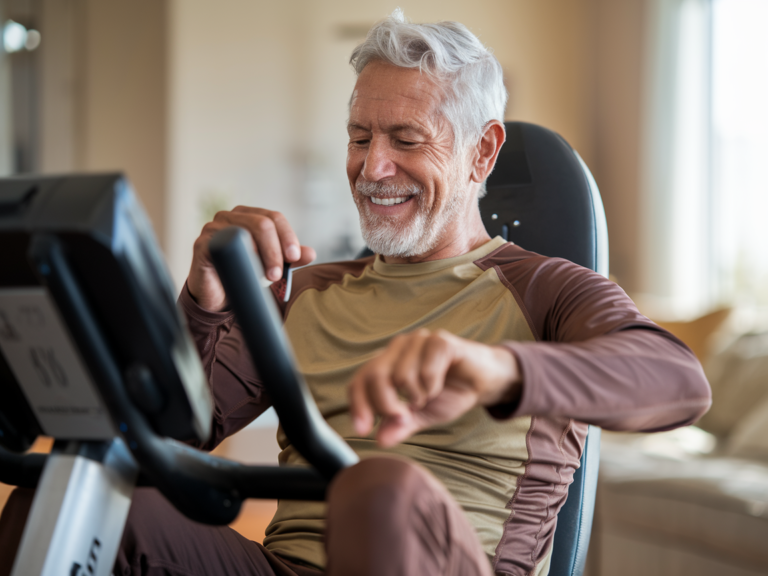Simple Balance Exercises to Prevent Falls After 50 (At Home)
Here’s a truth nobody talks about after 50: that moment when you reach for something and feel just a little less steady than you used to. Maybe it’s getting out of bed too quickly, or navigating uneven pavement, or simply standing on one foot to put on socks. These aren’t signs of weakness – they’re signals that your balance system needs some attention.
The good news? Simple exercises done at home can restore that steady confidence you remember.
Can balance be improved after 50?
Yes! Research shows that targeted balance exercises can reduce fall risk by up to 23% in adults over 50. Most people see improvements in stability within 2-4 weeks of consistent practice. The key is starting with safe, simple exercises and building up gradually.
My Wake-Up Call About Balance
Three months ago, I was carrying laundry down the stairs when I missed the last step. Nothing dramatic—just a stumble that left me grabbing the handrail harder than usual. But it got me thinking: when did walking down stairs become something I had to think about?
That moment sent me down a research rabbit hole about balance and falls. What I discovered surprised me. Falls aren’t inevitable as we age, and small improvements in balance can make a huge difference in confidence and safety.
Why Balance Changes After 50? (The Science Made Simple)
After 50, several things work against our balance. Our inner ear changes, making it harder to sense movement. Muscle strength decreases by about 1-2% each year. Vision changes affect depth perception. Even medications can throw off our equilibrium.
Dr. Jennifer Stevens, a physical therapist who specializes in fall prevention, explains it this way: “Think of balance like a three-legged stool. You need your vision, inner ear, and muscles all working together. When one leg gets wobbly, the others have to work harder.”
The good news? Studies show that balance training works at any age. A 2023 study in the Journal of Aging Research found that adults over 65 who did balance exercises three times a week improved their stability scores by 40% in just eight weeks.
What Didn’t Work? (Common Balance Mistakes)
Before I found exercises that actually helped, I tried a few things that were either too hard or downright risky:
Standing on one foot for minutes: This was frustrating and made me feel more unsteady, not less.
Complex yoga poses: While yoga can be great, starting with advanced poses without proper progression was a recipe for falls.
High-impact exercises: Jumping or quick movements actually increased my fall risk when my balance was already shaky.
Ignoring the problem: I used to think avoiding challenging situations was the answer. It just made my balance worse over time.
What Actually Worked: My Daily Balance Routine
After working with a physical therapist and testing different approaches, here’s the routine that made a real difference:
Morning Balance Routine (10 minutes)
1. Heel-to-Toe Walking (2 minutes) Walk in a straight line, placing your heel directly in front of your toes with each step. Use a wall for support if needed.
Pro tip: Start with 10 steps and work up to 20.
2. Standing March (1 minute) While holding onto a sturdy surface, lift one knee up toward your chest, then the other, like marching in place.
Why it works: Builds core strength and improves single-leg stability.
3. Sit-to-Stand Practice (2 minutes) Sit in a chair and stand up without using your hands. If that’s too hard, use one hand, then work toward hands-free.
Target: 10 repetitions
Evening Balance Routine (8 minutes)
1. Side Leg Raises (2 minutes) While holding a counter or chair, lift one leg out to the side, hold for 3 seconds, then lower. Switch legs.
Sets: 10 per leg
2. Calf Raises (1 minute) Rise up on your toes, hold for 2 seconds, then lower slowly.
Target: 15 repetitions
3. Tree Pose (Modified) (2 minutes) Stand on one foot while holding a wall or chair. Start with 10 seconds per leg, work up to 30 seconds.
4. Backward Walking (3 minutes) With wall support, take small steps backward. This challenges your balance in a different way.
Start: 5 steps, build to 15
Weekly Add-On: Balance Challenge Day
Once a week, I add these slightly harder exercises:
- Walking on different surfaces (carpet, hardwood, grass)
- Gentle head turns while walking
- Carrying a light object while doing balance exercises

Results Timeline: What to Expect
Week 1-2: You might feel shaky during exercises. This is normal! Focus on proper form over duration.
Week 3-4: Movements start feeling more natural. You’ll notice improved confidence during daily activities.
Month 2: Standing on one foot becomes easier. Stairs feel more stable.
Month 3: Friends and family notice you’re steadier on your feet. You feel more confident in challenging situations.
Month 6: Balance exercises become second nature. Fall anxiety decreases significantly.
Exercise Equipment Comparison
| Equipment | Price | Best For | Difficulty | Space Needed |
|---|---|---|---|---|
| None (wall support) | Free | Beginners | Easy | Minimal |
| Balance pad | $15-30 | Intermediate | Medium | Small |
| Resistance bands | $10-20 | Strength building | Easy-Medium | Minimal |
| Balance board | $25-50 | Advanced users | Hard | Medium |
| Tai Chi DVD | $15-25 | Gentle movement | Easy | Living room |
My recommendation: Start with wall support exercises for 4-6 weeks, then consider adding a balance pad for extra challenge.
Red Flags: When to See a Doctor
While balance exercises are generally safe, see your doctor if you experience:
- Sudden dizziness or vertigo
- Falls that happen without obvious cause
- Balance problems that get worse despite exercise
- Numbness in feet or legs
- Vision changes affecting depth perception
- Medication side effects causing dizziness
Dr. Stevens notes: “If you’ve fallen twice in the past year, or if you feel dizzy when standing up, get evaluated before starting any exercise program.”
Lifestyle Add-ons That Boost Balance
Beyond exercises, these habits support better balance:
Hydration: Dehydration affects blood pressure and can cause dizziness. Aim for 8 glasses of water daily.
Sleep: Poor sleep affects reaction time and coordination. Target 7-8 hours nightly.
Proper footwear: Supportive shoes with good tread. Avoid high heels or loose slippers.
Home safety: Remove throw rugs, improve lighting, install grab bars where needed.
Stress management: Anxiety can affect balance. Try gentle breathing exercises or meditation.
Common Balance Exercise Mistakes (And How to Fix Them)
Mistake 1: Pushing too hard too fast Fix: Start with 30-second holds, increase by 10 seconds weekly
Mistake 2: Exercising only when you remember Fix: Link balance practice to daily habits like brushing teeth
Mistake 3: Skipping exercises when feeling unsteady Fix: Use more support on difficult days, don’t skip entirely
Mistake 4: Focusing only on standing exercises Fix: Include seated balance work and walking practice
Mistake 5: Exercising in risky environments Fix: Always have something sturdy nearby for support
Your 1-Week Balance Starter Plan
Day 1-2: Wall-supported heel-to-toe walking (5 steps) + seated marching (30 seconds)
Day 3-4: Add sit-to-stand practice (5 repetitions) + side leg raises with support (5 per leg)
Day 5-6: Combine all previous exercises + try 10-second single-leg stands with wall support
Day 7: Rest day with gentle stretching and reflection on progress
Week 2 goal: Increase all exercises by 25% (more steps, longer holds, more repetitions)
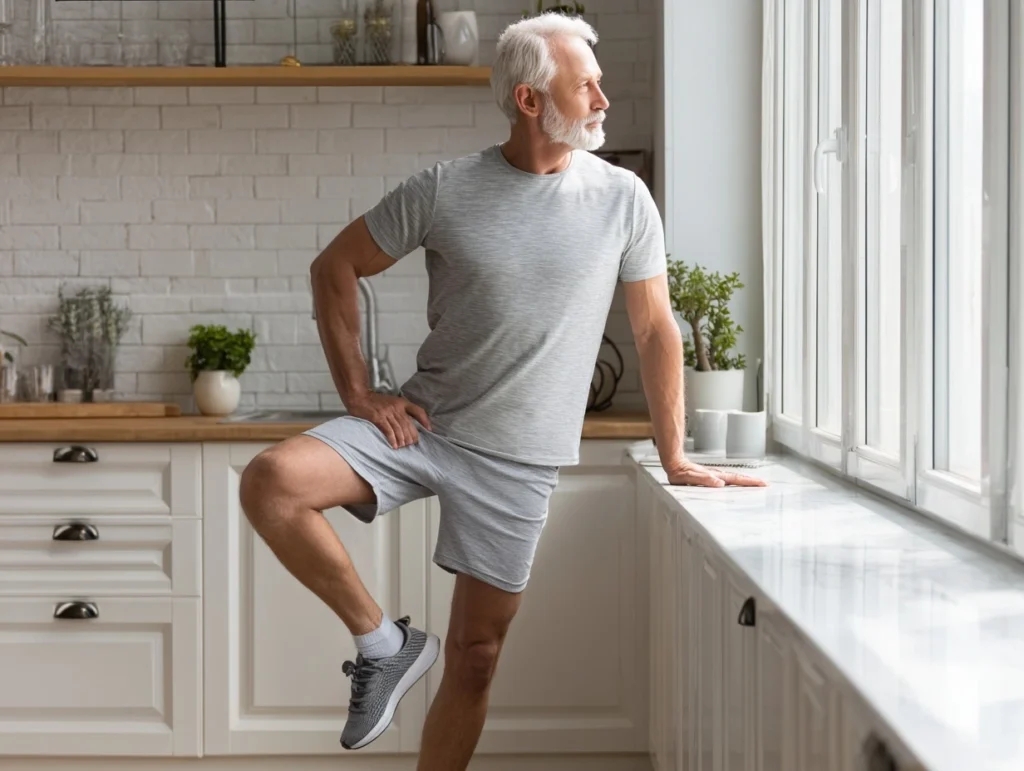
Myth vs. Fact: Balance Edition
Myth: “Balance problems are just part of getting older.” Fact: While balance changes with age, significant improvement is possible at any stage of life through targeted exercise.
Myth: “If I fall once, I’ll probably fall again.” Fact: Research shows that balance training reduces future fall risk by 23% even in people who have fallen before.
Myth: “Balance exercises are too risky for older adults.” Fact: When done properly with appropriate support, balance exercises are one of the safest ways to prevent falls.
The 5 P’s of Fall Prevention
Physical therapists often teach the “5 P’s” for comprehensive fall prevention:
- Physical activity (like our balance exercises)
- Proper footwear (supportive, well-fitting shoes)
- Prescription review (checking medications with your doctor)
- Prevention strategies (home safety improvements)
- Professional assessment (regular check-ups for vision, hearing, balance)
What Exercises Help Prevent Falls? (The Essential Five)
Based on research and my personal experience, these five exercise types make the biggest difference:
- Single-leg stands – Build ankle strength and proprioception
- Heel-to-toe walking – Improves dynamic balance and coordination
- Sit-to-stand – Strengthens legs and practices real-world movements
- Side stepping – Challenges lateral stability
- Backward walking – Activates different muscle groups and neural pathways
Beyond Balance: Building Confidence
The best part about improving balance isn’t just preventing falls—it’s regaining confidence. When you trust your body to keep you steady, you’re more likely to stay active. You’ll take that yoga class, walk on uneven trails, or play with grandchildren without constant worry.
Remember, balance is like any other skill. It improves with practice, patience, and consistency. You don’t need perfect balance to start—you just need to start where you are and build gradually.
Take Your First Step Today
Here’s my challenge to you: try the wall-supported heel-to-toe walking for just one minute today. Notice how it feels. Are you steady? Do you need to hold the wall the whole time? There’s no right or wrong answer—just a starting point.
Better balance isn’t about eliminating all wobbles or never feeling unsteady. It’s about building strength, coordination, and confidence so that when life throws you off balance (literally or figuratively), you can recover with grace.
Your journey to better balance starts with a single step. Take that step today, and give yourself credit for investing in your health, safety, and independence. You’ve got this.
Want more gentle fitness tips for active adults over 50? Join our community where we share practical advice, celebrate small wins, and support each other in staying strong and confident at every age.

